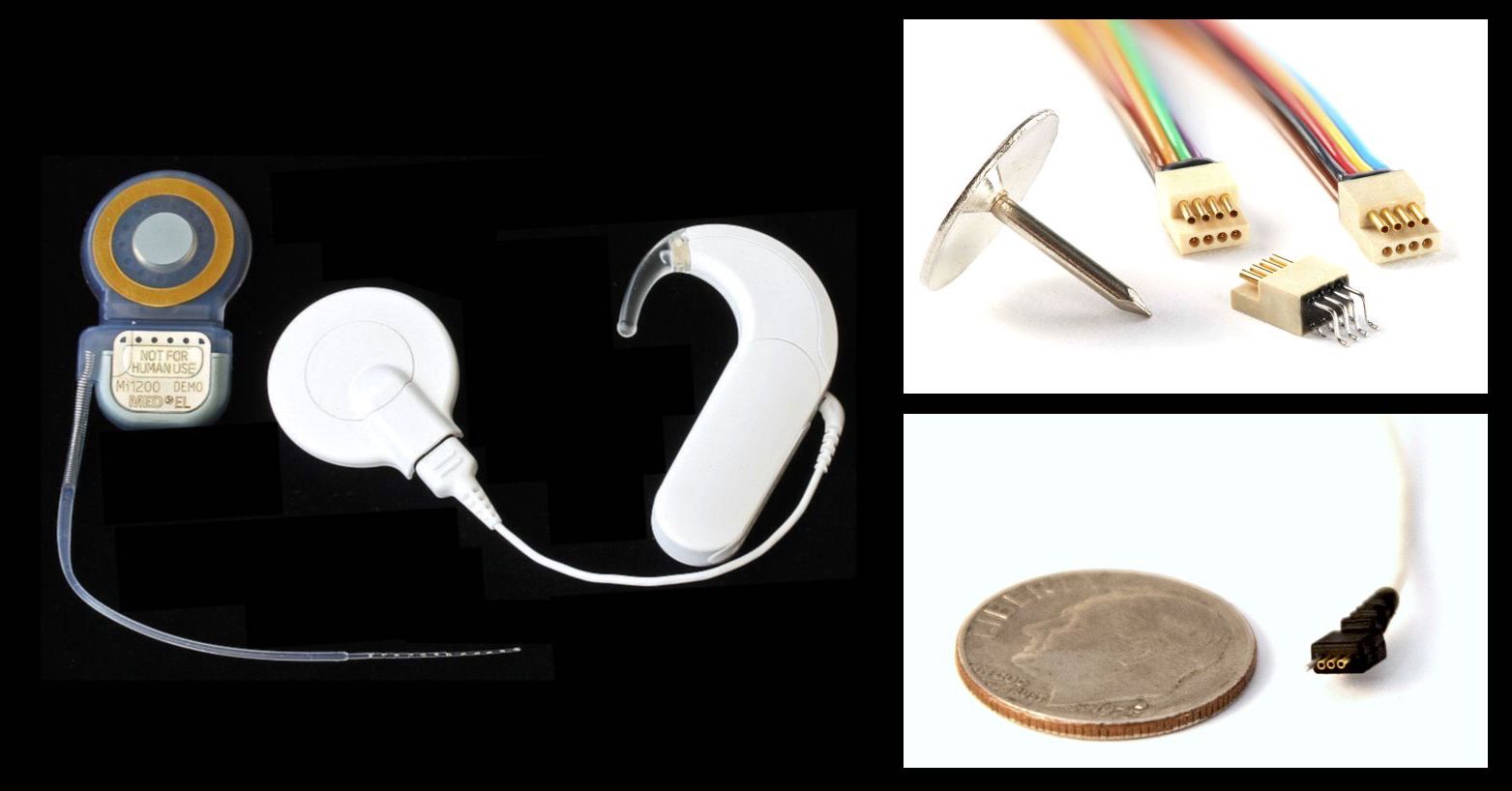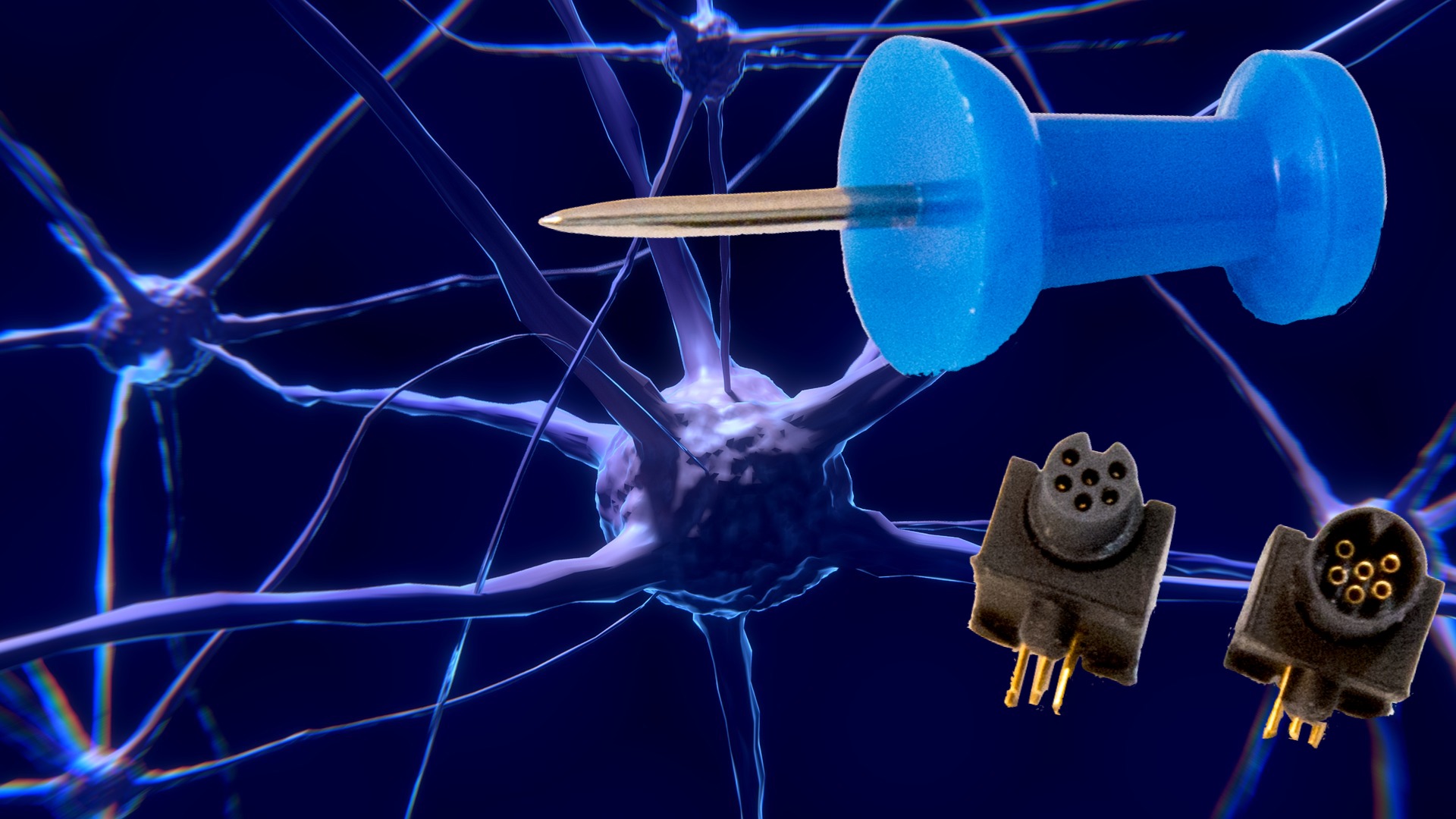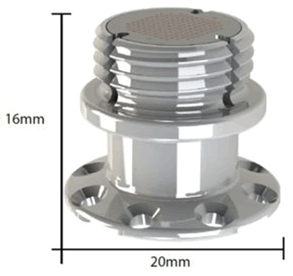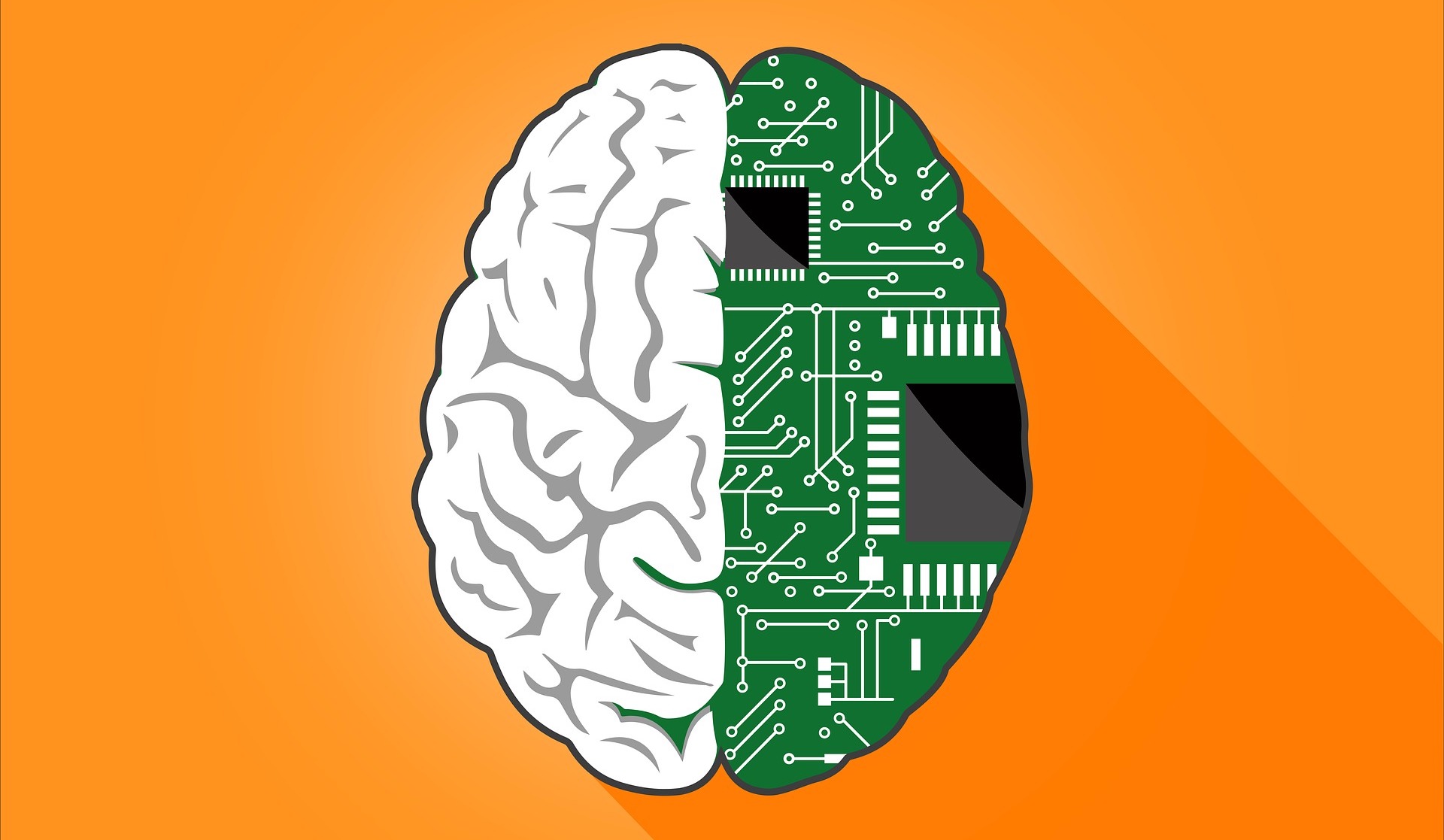The Brain-Machine Interface: Envisioning a Future With Neural Connectors
Elon Musk’s Neuralink project could push innovation in nanominiature connector technology. The tinier the connector, the more powerful it could be in medical brain-machine interface applications.

Normally in this publication, we cover topics related to the connector and cable assembly industries, as well as the latest technologies and best solutions for current challenges in electronics in every conceivable application. In this article, we’ll look at what the future — and perhaps the far-off future — might look like for connectors and cabling in one particular application: the brain-machine interface.
Tools have always been an extension of our innate capabilities, and computers are no different. Networked computers, like those connected through the internet, take this extension of human faculties to another level, where billions of human minds are able to share ideas and information between one another. While this network is extremely useful, it still relies on an ancient technology to mediate the flow of information: language. We take this for granted, but it’s remarkably cumbersome. The real bottleneck in the internet’s infrastructure is not anything electronic: It’s the human brain, nerves, and eyeballs tasked with decoding and making sense of information and ideas encoded in the language sent over the internet.
What if there were a technology that could network minds together directly, bypassing language? Unsurprisingly, it’s Elon Musk who has been among the first to really take this idea seriously. In 2016 he launched Neuralink, a project designed to create exactly this kind of direct connection between brains and computers, or a brain-machine interface if you will. Not a great deal is known about the firm’s activities since its founding, but there has been some interesting discussion around the technical challenges of connecting digital electronics directly to the brain in a way in which information could actually be exchanged meaningfully.
The Brain’s Electronics
In his blog Wait But Why, Tim Urban discusses these technical challenges at length, including a survey of the “electronics” of the brain itself. The brain and nervous system are composed of a vast array of biological cabling in the form of neurons and their axons and dendrites which receive and transmit electrical signals throughout the brain and body. As Urban points out, science understands how these systems work fairly well at a macro level. The inner workings of the brain itself are another matter, but surprisingly, figuring out the electrical signaling of the brain at a neural level will not likely be the most difficult part in building Neuralink’s specific brand of brain-machine interface. Instead, the biggest challenge will be engineering the hardware itself. To understand why it will be such a challenge, we need to understand exactly what Neuralink’s particular type of brain-machine interface will do, and where the technology of brain-machine interfaces is today.
The State of Brain-Machine Interfaces
Brains have actually been directly communicating with machines for quite a while. Bioprosthetic applications have been the most pervasive brain-machine interface technology so far, enabling users to control prosthetic actuation directly, without the need for muscular control. Also included in this category are devices that can replace lost hearing and vision. In the 1970s, Dr. William Dobelle implanted an experimental biocompatible electrode into a patient’s visual cortex, which, when stimulated, allowed the patient to see “phosphenes” or flashes of light.
Cochlear implants to treat sensorineural hearing loss have been around since the late 1950s. These devices convert sound into electrical signals that stimulate the cochlea directly and restore hearing. This brain-machine interface technology has steadily improved over the course of its nearly 70-year history. Today, nanominiature connectors from suppliers including Omnetics are reaching a level of small scale, reliability, and ruggedness that’s both improving the performance of existing devices like these, as well as enabling advances in other brain-machine interface technologies. Omnetics produces some of the smallest miniature and nanominiature connectors available, but as we’ll see, even their miniaturized scale may struggle to meet the needs of a project like Neuralink.

Nanominiature connectors, like these from Omnetics (right), are already employed in brain-machine interfaces like cochlear implants (left).
Not all brain-machine interfaces have a therapeutic application, however. In 2002, Kevin Warwick, a professor at Reading University in the UK, had a brain-machine interface called BrainGate implanted, which allowed electronics outside his body to interface with his median nerve. Warwick was subsequently able to control a robotic arm over the internet. The “enhancement” aspect of Warwick’s project (i.e., adding to, rather than just replacing, functionality) is the ultimate goal of Neuralink as well, but on a much, much more ambitious scale.
A Whole New Level of Brain-Machine Interface
Electrodes available today that are capable of directly interfacing with the human brain are able to monitor or stimulate anywhere between one and one hundred individual neurons with varying degrees of precision. Other methods of monitoring and interacting with neurons, including functional magnetic resonance imaging (fMRI) scans and electroencephalograms (EEGs), are not sensitive or responsive enough to measure whole brain activity at a granular, single-neuron level. However, Neuralink’s goal is a neuron-level interface with the whole brain.

Nanominiature connectors are critical components in the development of brain-machine interfaces and are continuing to shrink in size and grow in capabilities to help support the development of a brain-machine interface capable of directly interfacing with each of the roughly 100 billion neurons in the human brain.
Considering that the human brain contains somewhere in the ballpark of 100 billion neurons that are constantly changing their structure, the engineering challenges of establishing an effective brain-machine interface with every single one of them immediately become clear. There is a colossal difference between imprecisely interfacing with one hundred neurons, or even stimulating the visual cortex to produce the perception of light, and directly interfacing with all 100 billion neurons, or even the tens to hundreds of thousands of neurons that would enable useful brain-machine interface applications.
The Neuralink team hopes that electrode technology will become subject to Moore’s Law, just as transistor technology is, accelerating at a more than linear pace. Firms including Blackrock Microsystems are innovating in this area, and Blackrock’s commercial Utah Array electrode arrays have a flexible design that can be wired to various connectors for different applications.

Blackrock Microsystems Cereport Connector
For example, Blackrock’s Cereport connectors and associated cable assemblies are suitable for “chronic” use in humans.
In July 2019, Neuralink gave a presentation at the California Academy of Sciences in San Francisco, where the firm outlined some of the initial stages of what its technology will look like. Neuralink has developed a prototype robot capable of inserting 4 to 6μm-width electrode “threads” into the brain without damaging cerebral vasculature. While this was a major technical announcement from the highly secretive firm, Musk admitted that the event was primarily for recruitment, and that the vast majority of the technical engineering hurdles facing the Neuralink effort are yet to be conquered. Regardless of the purpose of Musk’s
presentation, the now extant micron scale electrode technology announced
foreshadows huge innovation from Neuralink in miniaturized electronics.
Looking at this technology might be like looking at vacuum tubes in the 1940s. The purpose of each of Musk’s companies does seem to be giving industries a nudge toward building world-changing technologies. Neuralink hopes to spark similar innovation for electrodes and other brain-machine interfaces, but no one knows quite what the future will look like for the technology. Regardless, continued innovation in miniaturized connectors and cable assemblies at micron scale, and flexible medical electronics in particular, are sure to be part of the picture.
Like this article? Check out our other New Technology articles, our Medical Market Page, and our 2019 Article Archive.
- 30 Years of Automotive CAN - March 30, 2021
- Industrial Interconnects Enable Advanced Process Controls in the Fresh Water Industry - February 23, 2021
- Remote Work Opens Network Infrastructures to Security Risks - December 8, 2020






